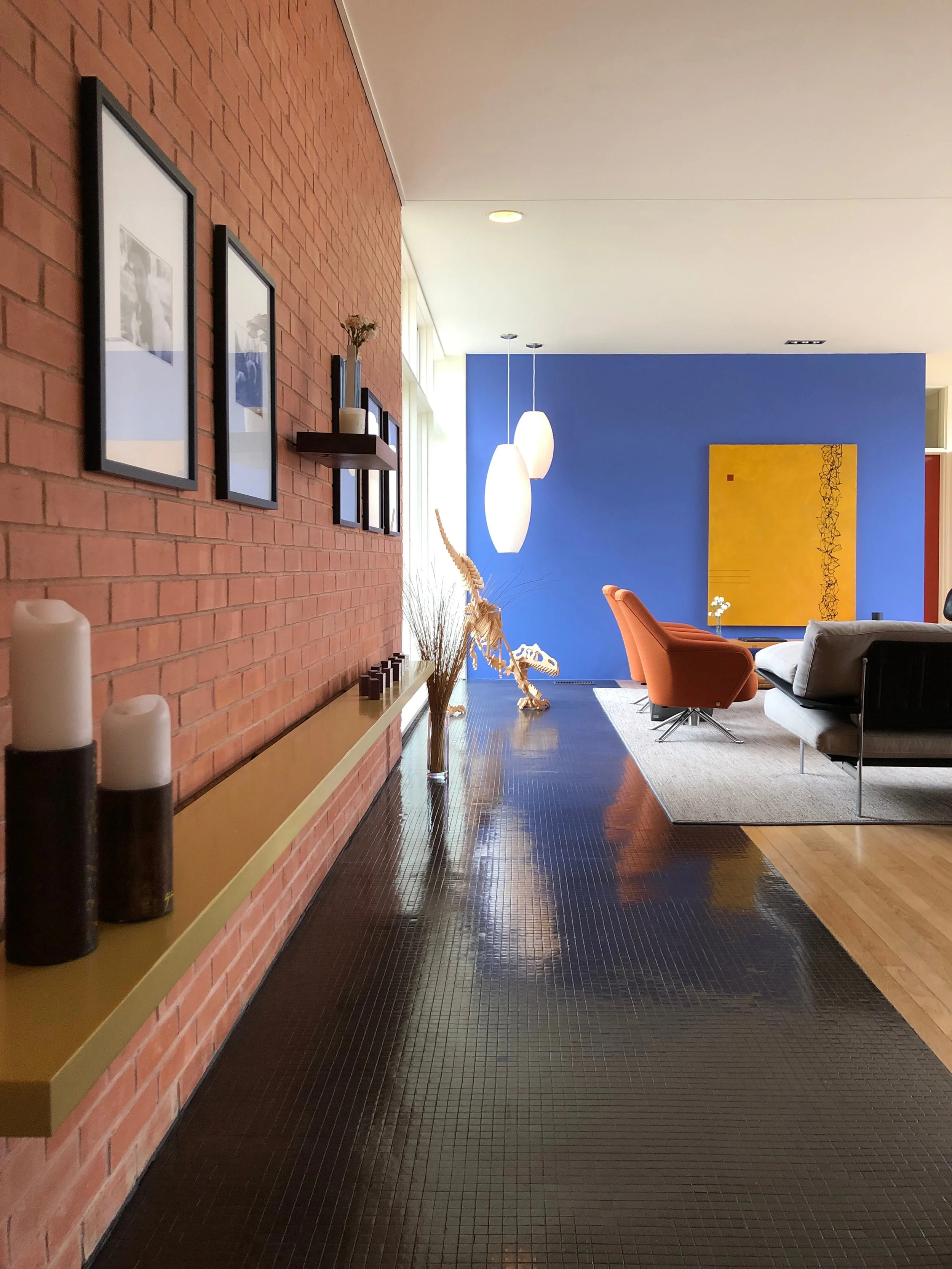PRESS | DALLAS ADVOCATE SPRING 2019
Interview with Architect Cliff Welch
In a time of teardowns, gentrification and home tours, neighbors debate what makes a house a home. Is it the square footage, location, elaborate finishes or state-of-the-art technology? Less tangible elements give a home its heart and soul, says Clifford Welch, architect at Welch Architecture can be a thoughtful balance of restraint, he says. Welch and his wife, Donna, bought 1019 Waterford Drive in 1996. Designed by Glenn Allen Galaway for John Houseman and Esther Webb in 1953, the house has been honored by Dallas American Institute of Architects and Preservation Dallas. Here’s how the Welch family turned a mid-century modern into a home well-lived after buying it from the Houseman daughter.
What was your redesign strategy?
It had lived through several decades of style and trends. We spent several years restoring it back to its original roots. All the bones were there. We just needed to pull out the green shag carpet and period wallpaper and bring the original colors, materials and finishes back to life. We haven’t moved any major walls.
What made it a home for your family?
This is the only home our son, Dylan, has ever known. We’ve watched his room go from an office/guest room to a nursery, to a kid’s room, and is now full of college students playing video games whenever he and his friends are back during breaks. It’s been the venue for numerous parties, showers, fundraisers and countless fire-pit nights. It’s no different from any other family home, other than perhaps the openness and seamless connection from the inside to the outside. The home’s backyard backs up to Dixon Branch and Old Lake Highlands Park.
What makes a Home Meaningful?
What is it that makes a home meaningful? Is it the square footage, location, elaborate finishes, or state-of-the-art technology? While each of these may contribute, there are other less tangible elements that give a home its heart and soul.
Like a well written piece of music, a home is the sum of its carefully crafted “notes.” Each note, each stanza: rhythm, tone, harmony, melody, texture and form unite to create the collective ensemble.
Both music and architecture can be a thoughtful balance of restraint, accentuated with moments of vibrancy and crescendo. Fewer notes, fewer materials can result in a stronger, more cohesive whole, pleasing to the ear and to the eye. The materials play together in harmony; the texture of carefully crafted brick or stone, balanced against the soft warmth of wood. Simple walls of subtle tones balanced with those of bold color complimenting the natural materials around them, each serving as a backdrop for art and photography. Concrete, wood, steel and glass; simple and elemental building materials, each providing their own beauty.
Attention to detail is integral to lasting and meaningful work, regardless of scale. Whether taking the time and patience to orchestrate the juxtaposition of materials and finishes or to simply provide enough storage and display space for reducing clutter, thus paring down the notes and eliminating those deemed unnecessary or out of tune. Rethinking what is considered typical or acceptable is one aspect of the process, for example designing the way one enters their home on a daily basis by creating an integrated space for the car. The sequence of pulling into a beautiful open carport, connected to both nature and the materials and detailing of the home, provides a different daily experience than parking amongst the lawn equipment, ice chests and camping equipment.
Light brings architecture to life: it is essential to the mood, it defines form, shape and space. Its quality and color set the tone for the materials on which it falls. It’s movement throughout the day creates a rhythm, its distinct stanzas repeated day after day, season after season. Floor to ceiling glass blurs the distinction between interior and exterior space, carefully placed windows can frame views, clerestory windows just below the roofline provide ambient light while capture the color, movement and shadows, of sunrises, sunsets, clouds and moonlight filtered through the trees. Frosted glass and sunscreens provide natural light while adding privacy, and pattern.
A home connects to nature and its surroundings in many ways. Screen porches and operable windows allow for breezes, fresh air, and the sounds of nature to resonate within the home. It may be the soft refrain of the wind blowing through the bamboo, or the ballad of a mockingbird. The music of soft rain on the roof and through trees or thunderstorms rolling in connect us to the natural world around us.
Incorporating the basic elements of fire and water into the home and connect us back to the basic human emotion. A small fountain or reflecting pool can provide movement that can extends across walls, ceilings and into the trees. Fireplaces and firepits connect us back to the essential elements of the earth.
Well-designed homes enhance the lives of their inhabitants, and reflect their lifestyle, personality, and individuality. Our own home designed in 1953 embraces many, if not all of the elements above and has played meaningful part in our lives.
Cliff Welch, AIA
1019 Waterford Drive was designed by Glenn Allen Galaway for John Houseman and Esther Webb in 1953. This home has been honored with tby Dallas American Institute of Architects with its 25 Year Award for lasting meaningful architecture, by Preservation Dallas, and has been on numerous architectural and home tours.










